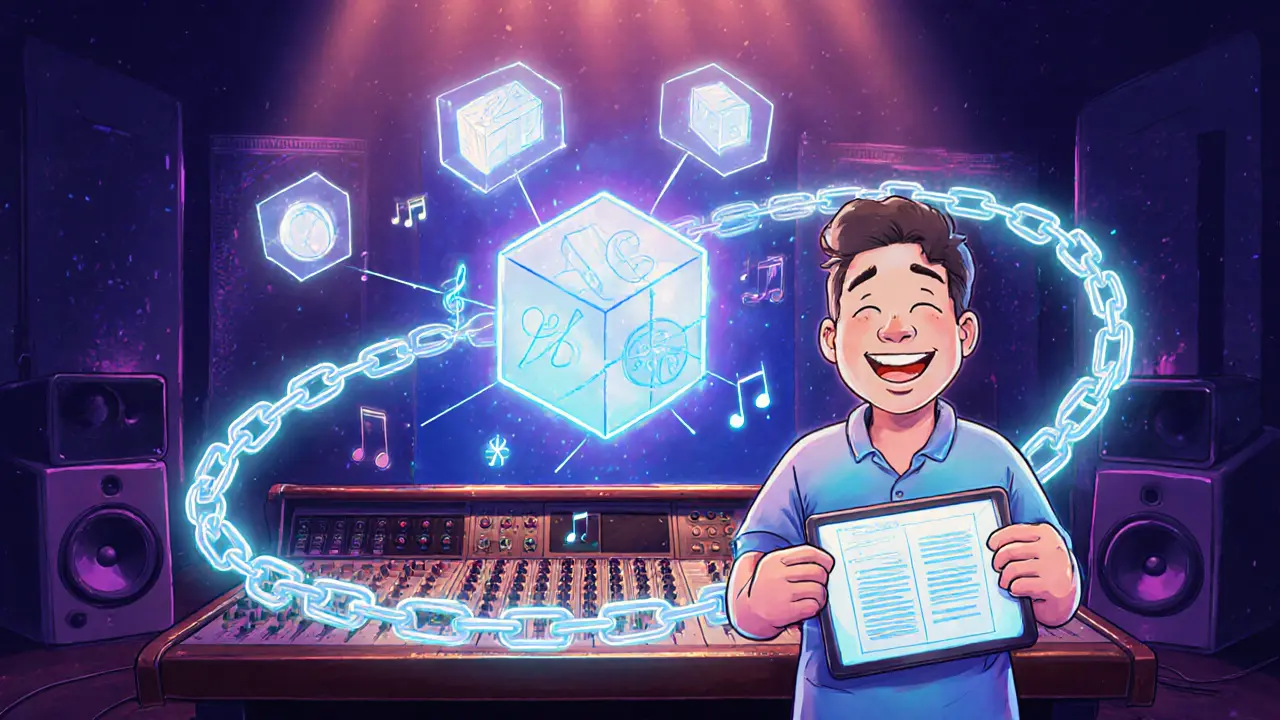Explore how blockchain reshapes music rights, from smart contracts and instant royalties to NFTs, while covering real‑world pilots, challenges, and future trends.
Decentralized Music: How Blockchain Is Changing the Soundscape
When talking about decentralized music, a music ecosystem built on blockchain that lets creators own, monetize, and distribute tracks without middlemen. Also known as decentralized audio, it combines peer‑to‑peer distribution, smart‑contract royalties, and tokenized ownership to give artists full control.
At the heart of this shift sits blockchain, the immutable ledger technology that records every play, sale, and royalty payment. Without blockchain, you can't guarantee that an artist's share is automatically paid out or that a track's provenance is verifiable. Blockchain therefore provides the trust layer that fuels the whole decentralized music movement.
Key Elements of Decentralized Music
Another pillar is the NFT, a unique digital token that can represent ownership of a song, album, or exclusive backstage access. NFTs let fans buy a piece of a track, collect limited‑edition art, or earn a share of streaming revenue. This token‑based ownership model reshapes royalties: instead of a flat rate, creators can embed royalty percentages directly into the NFT's smart contract, so every resale triggers an automatic payout.
The crypto streaming, platforms that stream music while paying artists in cryptocurrencies like ETH or SOL builds on NFTs and blockchain. These services bypass traditional licensing fees, letting listeners tip artists in real time. Because payments settle on‑chain, you see transparent, near‑instant compensation rather than the months‑long delays of legacy services.
All of these pieces sit inside the broader Web3, the next generation internet that integrates decentralized protocols, token economies, and user‑owned data. Web3 provides the infrastructure for wallets, identity, and programmable money, making it possible for any user to become both listener and investor with a single click.
These entities interact in clear ways: decentralized music encompasses NFT‑powered ownership; it requires blockchain for trust; crypto streaming leverages both to deliver instant payments; and Web3 ties everything together by giving users the tools to manage wallets and tokens. In practice, this means an artist can mint an NFT album, list it on a crypto streaming platform, and watch royalties flow automatically to their wallet, all without signing a record‑label contract.
Beyond the tech, real‑world projects illustrate the model. Some platforms let fans buy a token that represents 1% of future streaming revenue, turning listeners into micro‑investors. Others issue “song NFTs” that unlock concert tickets or exclusive merch. These use cases show that decentralized music isn’t just hype—it’s a functional marketplace where creators and fans share value directly.
If you’re new to the space, start by setting up a crypto wallet, then explore an NFT marketplace that lists music NFTs. Try streaming a track on a crypto‑enabled service and see how the payment appears in your wallet. This hands‑on approach demystifies the flow: mint → list → stream → earn.
The collection below dives deeper into each of these elements. You’ll find guides on how blockchain achieves immutability, detailed looks at NFT airdrops, and reviews of platforms that support crypto streaming. Whether you’re a creator curious about tokenizing your catalogue or a fan looking to support artists directly, the posts ahead give you practical steps and real‑world examples.
Ready to explore the full range of decentralized music tools, strategies, and case studies? Scroll down to discover the articles that break down each component and show you how to put this new model to work today.

